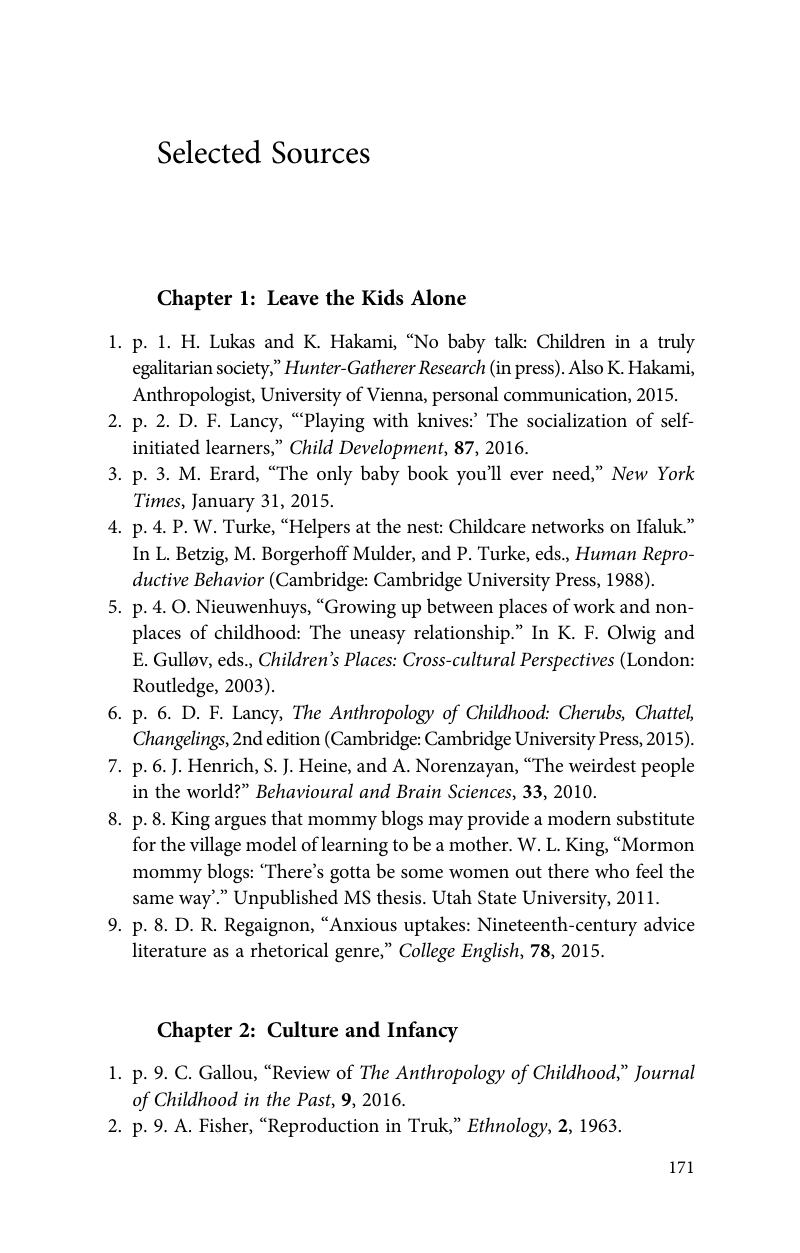Book contents
- Reviews
- Raising ChildrenSurprising Insights from Other Cultures
- Raising Children
- Copyright page
- Dedication
- Contents
- Figures
- Acknowledgments
- 1 Introduction
- 2 Culture and Infancy
- 3 Questions about Infant Attachment
- 4 Children Playing and Learning
- 5 Protection versus Suppression
- 6 Going to School
- 7 The Consequences of Raising “Unique Individuals”
- 8 Summary and Speculation
- 9 The Backstory
- Selected Sources
- Index
- References
Selected Sources
Published online by Cambridge University Press: 05 July 2017
- Reviews
- Raising ChildrenSurprising Insights from Other Cultures
- Raising Children
- Copyright page
- Dedication
- Contents
- Figures
- Acknowledgments
- 1 Introduction
- 2 Culture and Infancy
- 3 Questions about Infant Attachment
- 4 Children Playing and Learning
- 5 Protection versus Suppression
- 6 Going to School
- 7 The Consequences of Raising “Unique Individuals”
- 8 Summary and Speculation
- 9 The Backstory
- Selected Sources
- Index
- References
Summary

- Type
- Chapter
- Information
- Raising ChildrenSurprising Insights from Other Cultures, pp. 171 - 202Publisher: Cambridge University PressPrint publication year: 2017

